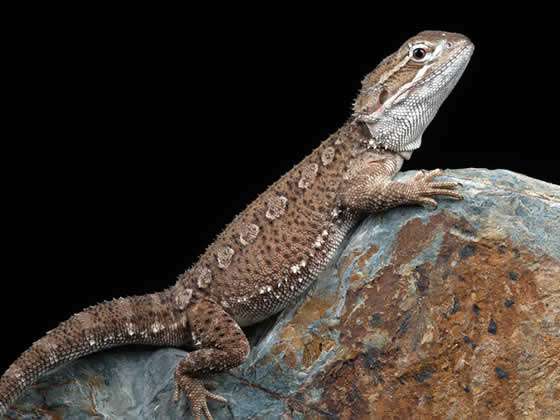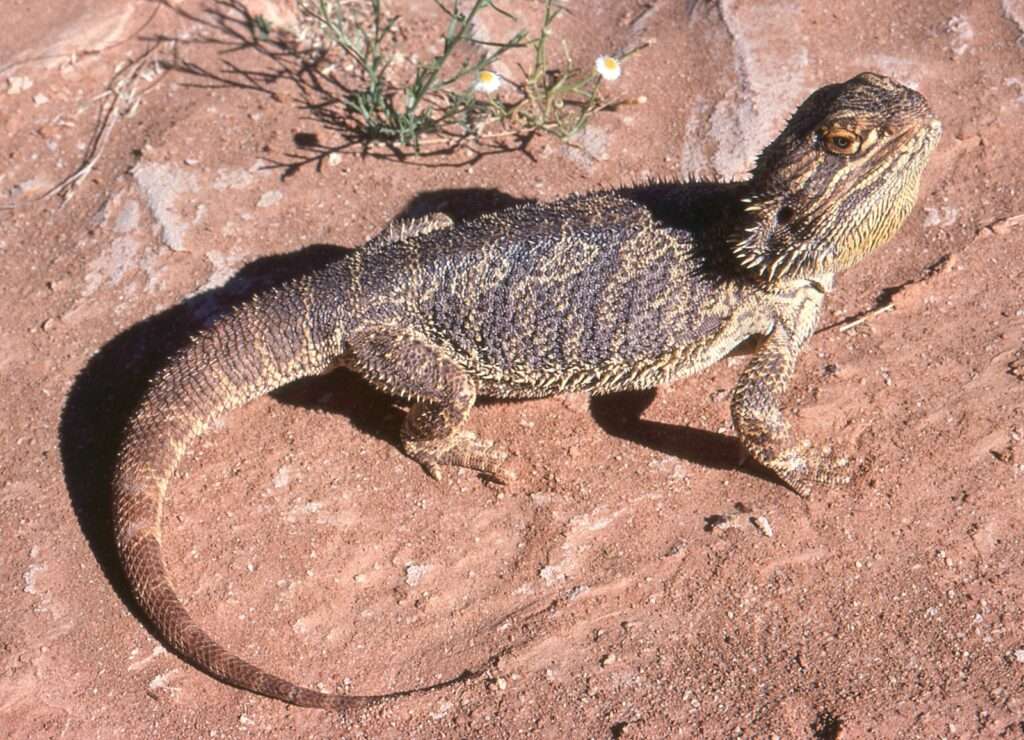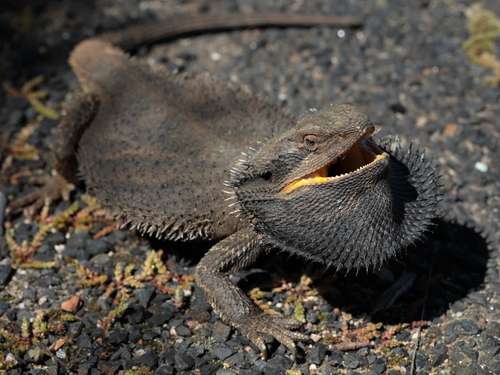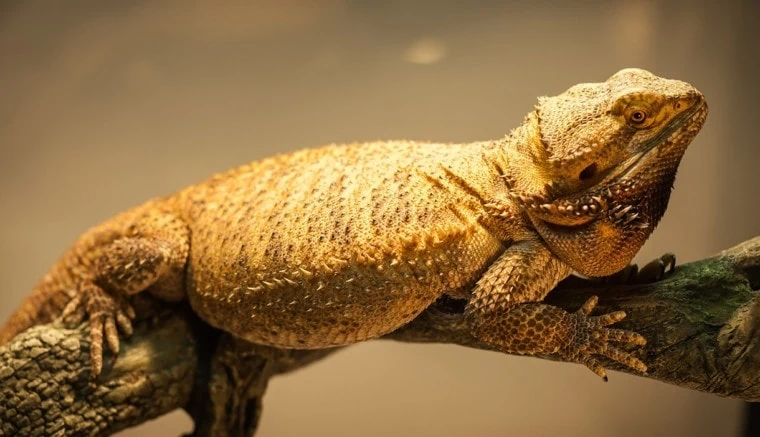
Description:
Scientific name: Pogona henrylawsoni
Life span: 6-8 years
Pogona Henrylawsoni, an Australian agamid lizard species, is known as the Rankin’s dragon. Other names for it include black-soiled bearded dragon and pygmy bearded dragon, despite the fact that both names are shared with other small Pogona species.
The rankin’s dragon is a small species of lizard that has a round head, a short snout, a slender body, and various brown and gray tones. The backs of Rankin’s dragons are uniquely marked with a bowtie. They are also spiky.
Native Region/Habitat
Although it is indigenous to Queensland in Australia, it is kept in captivity all over the world.

Behavior:
The rankin’s dragon is a mild-mannered species that spends the majority of its time climbing, hiding in crevices, and soaking up the sun. These lizards are friendly and get along well with other members of their own species. While harboring several rankin’s dragons, make sure the females outnumber the males.
The rankin’s dragon is usually calm and accepting of handling, however it has been known to bite when threatened. The bite is comparable to a little, tingling pinch, although it is not fatal and is just moderately unpleasant. The fun and enthralling actions displayed by Rankin’s dragons include head bobbing and arm waving. The daytime is when this species is most active.
Care As a pet/In captivity:
Enclosure size: A vivarium that is at least 4 x 2 x 2 feet in size and has the breadth and height to accommodate a thermal gradient, a thick substrate, and climbing resources like branches and pebbles is needed for Rankin’s dragons. 15-gallon tanks should be used for juveniles.
Temperature and Humidity: For the rankin’s dragon to control its internal body temperature, the enclosure must have a temperature gradient, or a hot and cool end. The enclosure’s warm end must remain between 110 and 110 degrees Fahrenheit, while the cool end ought to be close to 82 degrees. During the night, the temperature can safely drop to about 75°F.
In order to guarantee that fluctuations are maintained to a minimum, install thermometers on both sides and collect readings every day. Add a ceramic heat emitter if the basking lamp isn’t producing enough heat, but make sure heat sources can’t directly contact the lizard’s skin. Since they are acclimated to dry climates, Rankin’s dragons prefer environments with a low humidity of 30 to 40%. Low humidity is kept at bay with the aid of cross ventilation and a dry substrate. However, sprinkle the enclosure with water softly if the humidity falls below 30%.
Food: Rankin’s dragons are omnivores that consume a wide range of fruits, vegetables, and insects in their natural habitat. Crickets, dubia roaches, locusts, mealworms, morio worms, leafy collard greens, and finely sliced vegetables like carrots and squash should take the place of the lizard’s varied diet in captivity.
The size of live meals, like crickets, should be smaller than or equal to the distance between the eyes of a rankin dragon. Remove any leftover food to keep the enclosure tidy.
Table





